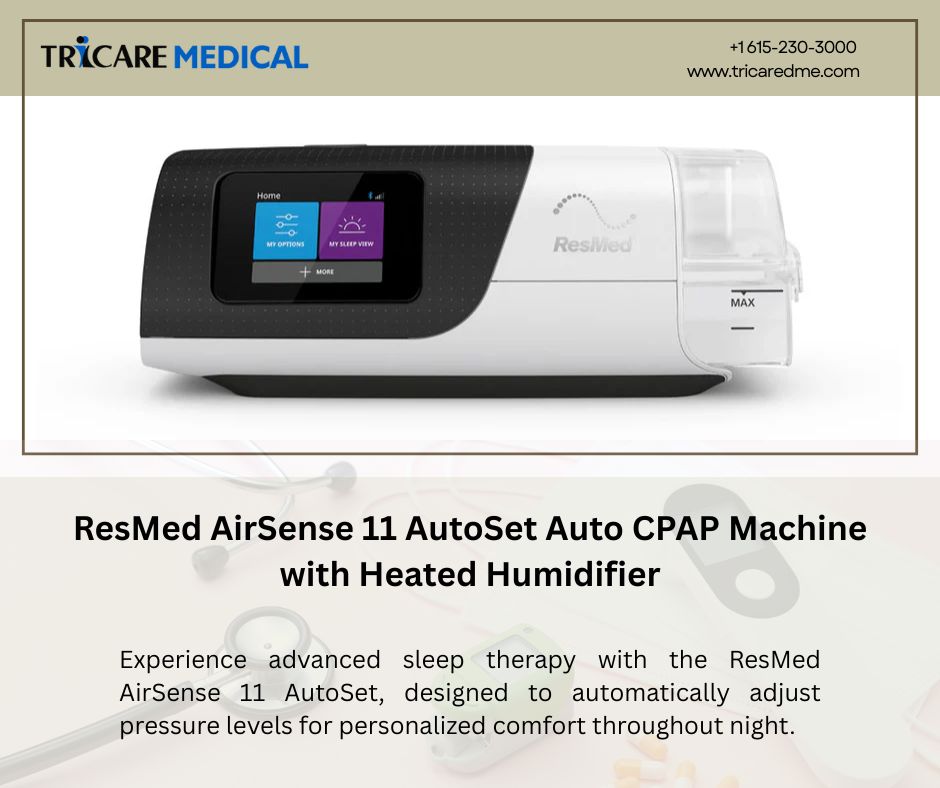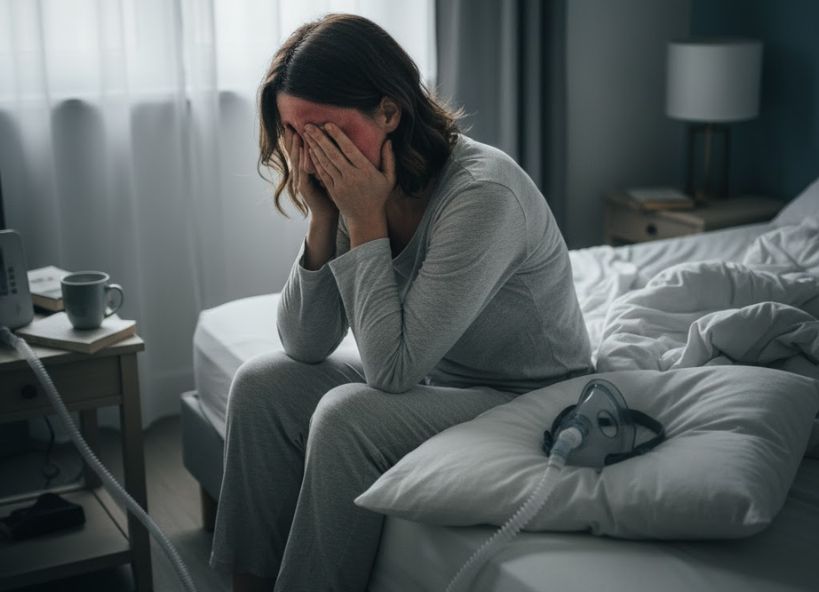CPAP Machine: How to Use It Correctly for Better Sleep
- 6 min reading time
If you've been diagnosed with obstructive sleep apnea (OSA), your doctor may have recommended a CPAP machine. CPAP, which stands for Continuous Positive Airway Pressure, is a device that helps keep your airways open while you sleep. When used properly, a CPAP machine can significantly improve your sleep quality, reduce daytime fatigue, and lower the risk of serious health problems. However, many users struggle to adapt to the machine or don’t use it consistently. In this blog, we’ll explore how to use a CPAP machine correctly for better sleep and long-term benefits.
Understanding How CPAP Works
A CPAP machine works by delivering a steady stream of air through a mask worn over the nose or mouth (or both). This air pressure keeps the airway from collapsing, which is the primary cause of breathing interruptions in sleep apnea. The result is more stable breathing during sleep, fewer awakenings, and a deeper, more restful night's rest.
Start with a Comfortable Fit
One of the most important factors in successful CPAP use is finding a mask that fits well and feels comfortable. There are several types of masks: nasal pillows, nasal masks, and full-face masks. The right one for you depends on your breathing habits, sleep position, and comfort preferences.
Make sure the mask is snug but not overly tight. A mask that leaks or causes irritation can discourage you from using the machine consistently. If you experience discomfort, work with your sleep specialist or CPAP supplier to try different sizes or styles.
Build a Nightly Routine
Using a CPAP machine can feel strange at first, especially if you’re not used to wearing a mask at night. To ease into it, create a relaxing bedtime routine that includes putting on the CPAP mask. Try wearing the mask for short periods during the day while watching TV or reading to get accustomed to the feeling.
Consistency is key. Make an effort to use the CPAP every night, even during naps. Skipping nights can reduce the effectiveness of the therapy and slow your progress.
Keep Your Equipment Clean
Clean equipment is essential for both comfort and hygiene. Moisture from your breath can lead to mold or bacteria buildup in the hose or mask, potentially causing sinus infections or skin irritation.
Follow the manufacturer’s cleaning instructions carefully. Generally, you should:
Wash the mask and tubing daily or at least a few times a week with warm, soapy water.
Empty and refill the humidifier chamber with distilled water daily.
Replace filters and mask parts as recommended.
A clean machine not only keeps you healthy but also ensures optimal performance.
Use the Humidifier
Many CPAP machines come with a built-in humidifier, which adds moisture to the air and prevents dryness in the nose and throat. If you wake up with a dry mouth or nose, try increasing the humidity setting or using a heated hose. This can greatly improve comfort and help you stick with the therapy.
Monitor and Adjust
Most modern CPAP machines have data tracking that shows how well your therapy is working. You (and your doctor) can monitor metrics like usage hours, mask fit, and apnea events per hour. This feedback helps identify any problems and make adjustments to your treatment plan.
If you're still feeling tired or experiencing side effects, don’t hesitate to talk to your healthcare provider. They may adjust the pressure settings or suggest different equipment.
Stay Patient and Committed
Adjusting to a CPAP machine takes time. It’s normal to feel frustrated in the beginning, but the long-term benefits—better sleep, improved mood, and reduced health risks—are well worth the effort. Support groups and online forums can also offer advice and encouragement from others going through the same journey.
Read more: FreeStyle Libre 3 Plus CGM System | Choose Best Nasal CPAP Mask based on Sleep Style
Final Thoughts
Using a CPAP machine correctly can transform your sleep and overall health. Focus on comfort, consistency, and cleanliness, and don’t be afraid to ask for help if you're struggling. With patience and the right approach, you’ll be on your way to better sleep and a healthier life.



